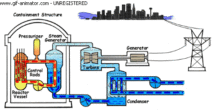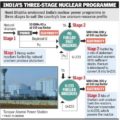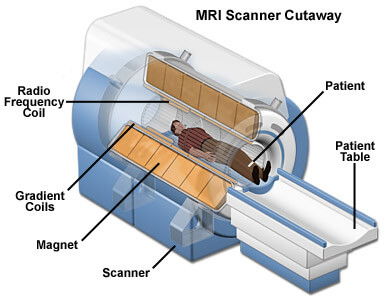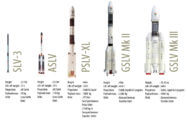
Ballistic Missile vs. Cruise Missile, India’s Missile Systems, IGMDP
Subscribe to Never Miss an Important Update! Assured Discounts on New Products!
Must Join PMF IAS Telegram Channel & PMF IAS History Telegram Channel
We frequently notice news related to ballistic missiles, cruise missiles and various missile systems of India. Memorizing names and salient features of various Indian missiles is hard without having a broader understanding of the concept of ballistic missiles and cruise missiles, and major missile defence systems. It is better to give these concepts a holistic structure rather than learning them in bits and pieces.
Ballistic Missile vs. Cruise Missile
The Hindu | GS3 > indigenization of technology
The terms ‘ballistic missile’ and ‘cruise missile’ appear in news articles wherever there is a missile test. It is essential for us to understand these terms to understand various Indian missile defence systems.
Ballistic Missile
- A ballistic missile follows a ballistic trajectory to deliver one or more warheads on a predetermined target.
- A ballistic trajectory is the path of an object that is launched but has no active propulsion during its actual flight (these weapons are guided only during relatively brief periods of flight).
- Consequently, the trajectory is fully determined by a given initial velocity, effects of gravity, air resistance, and motion of the earth (Coriolis Force).

Image Credits: Wikipedia
- Shorter range ballistic missiles stay within the Earth’s atmosphere.
- Longer-ranged intercontinental ballistic missiles (ICBMs), are launched on a sub-orbital flight trajectory and spend most of their flight out of the atmosphere.
Types of ballistic missiles based on the range
- Short-range (tactical) ballistic missile (SRBM): Range between 300 km and 1,000 km.
- Medium-range (theatre) ballistic missile (MRBM): 1,000 km to 3,500 km.
- Intermediate-range (Long-Range) ballistic missile (IRBM or LRBM): 3,500 km and 5,500 km.
- Intercontinental ballistic missile (ICBM): 5,500 km +
Cruise missile
- A cruise missile is a guided missile (target has to be pre-set) used against terrestrial targets.
- It remains in the atmosphere throughout its flight.
- It flies the major portion of its flight path at approximately constant speed.
- Cruise missiles are designed to deliver a large warhead over long distances with high precision.
- Modern cruise missiles are capable of travelling at supersonic or high subsonic speeds, are self-navigating, and are able to fly on a non-ballistic, extremely low-altitude trajectory.
Types of cruise missiles based on speed
- Hypersonic (Mach 5): these missiles would travel at least five times the speed of sound (Mach 5). E.g. BrahMos-II.
- Supersonic (Mach 2-3): these missiles travel faster than the speed of sound. E.g. BrahMos.
- Subsonic (Mach 0.8): these missiles travel slower than the speed of sound. E.g. Nirbhay.
Differences between Ballistic Missile and Cruise Missile
| Ballistic Missile | Cruise Missile |
|
|
|
|
|
|
|
|
|
|
|
|
|
|
|
|
|
|
Integrated Guided Missile Development Programme (IGMDP)
PIB | Source | The Hindu | 19-06-2019 | GS3 > indigenization of technology
- IGMDP was conceived by Dr. A P J Abdul Kalam to enable India attain self-sufficiency in missile technology.
- IGMDP was conceived in response to the Missile Technology Control Regime that decided to restrict access to any technology that would help India in its missile development program.
- To counter the MTCR, the IGMDP team formed a consortium of DRDO laboratories, industries and academic institutions to build these sub-systems, components and materials.
Missile Technology Control Regime (MTCR)
|
- IGMDP was started in 1983 and completed in March 2012.
- Keeping in mind the requirements of various types of missiles by the defence forces, the development of five missile systems was taken up.
- Prithvi: Short-range surface-to-surface ballistic missile (Prithivi means Earth Surface to Surface)
- Agni: Intermediate-range surface-to-surface ballistic missile
- Trishul: Short-range low-level surface-to-air missile
- Akash: Medium-range surface-to-air missile (Akash means Sky Surface to Air)
- Nag: Third generation anti-tank missile (Nag means Snake Nag slithers like a Snake to hit a tank!)
- After its success, the Agni missile program was separated from the IGMDP upon realizing its strategic importance.
India’s Missile Systems
PIB | Source | The Hindu | GS3 > indigenization of technology
| Missile | Type | Range | |
| Astra | air-to-air | 80 km | |
| Trishul | surface-to-air | 9 km | |
| Akash | 30 km | ||
| Prithvi Air Defence (PAD) | 2000 km | ||
| Nag | surface-to-surface Anti-tank missile | 4 km | |
| Prahaar | surface-to-surface | SRBM | 150 km |
| BrahMos | land, naval, air | Supersonic Cruise Missile | 300 km |
| Nirbhay | land, naval, air | Subsonic Cruise Missile | 1000 km |
| K-15 Sagarika | underwater-to-surface | SLBM | 700 km |
| Dhanush | sea-to-sea/surface | SRBM | 350 km |
| Shaurya | surface-to-surface | SLBM | 1900 |
SLBM: Sub-marine launched ballistic missile
| Missile | Features |
| Astra |
|
| Trishul |
|
| Akash |
|
| PAD |
|
| Nag |
|
| Prahaar |
|
| BrahMos |
|
| Nirbhay |
|
| K-15 Sagarika |
|
| Dhanush |
|
| Shaurya |
|
Prithvi Missiles
All the Prithvi variants are surface-to-surface SRBMs.
| Name | Version | Range | Payload in kg |
| Prithvi I | Army version | 150 km | 1000 |
| Prithvi II | Air force version | 350 km | 500 |
| Prithvi III | Naval version | 600 km | 1000 |
Agni Missiles
| Name | Type | Range | Payload in kg |
| Agni-I | MRBM | 700 – 900 km | 1,000 |
| Agni-II | MRBM | 2,000 – 3,000 km | 750 – 1,000 |
| Agni-III | IRBM | 3,500 – 5,000 km | 2,000 – 2,500 |
| Agni-IV | IRBM | 3,000 – 4,000 km | 800 – 1,000 |
| Agni-V | ICBM | 5,000 – 8,000 km (Testing) | 1,500 (3 – 10 MIRV) |
| Agni-VI | ICBM | 8,000 – 10,000 km (Under development) | 1,000 (10 MIRV) |
MIRV: Multiple Independently targetable Re-entry Vehicle

Anti-satellite weapons (ASAT)
- In March 2019, India successfully tested its ASAT missile.
- The ASAT missile destroyed a live satellite in Low Earth orbit (283-kilometre).
- As per DRDO, the missile is capable of shooting down targets moving at a speed of 10 km per second at an altitude as high as 1200 km.

















wonderful sir
Thanks a lot for this fantastic compilation sir!
I was unable to find such complied information on internet, but I found it here. Thanks a lot to PMFIAS
Thanks a lot
What a work sirji. Thank you so much
Thanks for very useful information and systematic content is systematic view of point very fantastic please keep it up latest update by geneon source like Hindu PIB arc etc